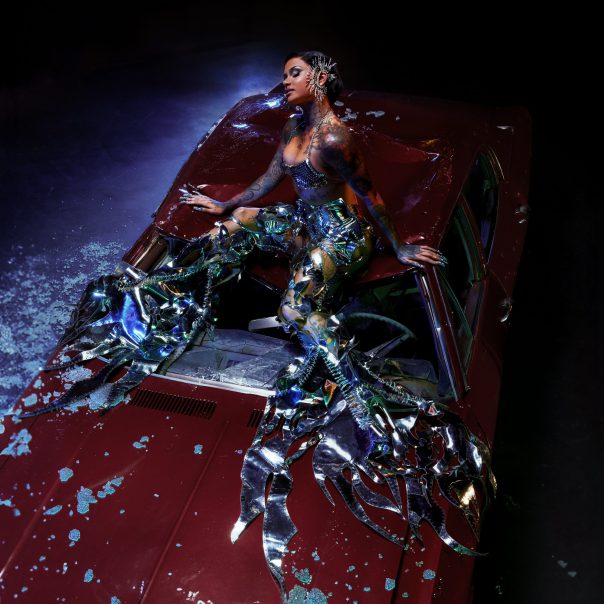REVIEW: Kehlani is tuning in to ‘CRASH’ on new LP

Kehlani, “CRASH”
On one level, it’s Kehlani’s superb voice that’s the driving force of their latest album, CRASH. A voice that that stops a song from being background music and forces you to stop what you’re doing, lean in and listen. On another level, alternate level, it’s the lyrics or perhaps mood that drives the music. However you decide on it, the question still becomes, what exactly are we listening to? What kind of album is this?
CRASH
Kehlani
Atlantic, June 21
9/10
Get the album on Amazon Music.
Their first LP since 2022’s blue water road, CRASH seems set on highlighting the many emotional directions a budding — or fracturing — romance can move in. At one moment, we’re suspicious and in “Tears” (featuring Nigerian artist Omah Lay). At another we are in “Vegas” making the cliché of What happens there stays there into an upbeat anthem. Then it’s off to the “Chapel,” where despite what the singer is trying to convince themself of; no NDAs; they absolutely need to sign an NDA. While it’s almost never a good idea to try and interpret lyrics as pure autobiography, the Oakland native has provided more than one entry point for confession in these 13 tracks.
CRASH is probably not what most people would think of as a concept album, but within the eight Dixson- or Jack-Rochon-produced tracks, there are other great producers on board. We’re presented with a world where only one radio exists with one set of stations. The first station is “Groove Theory,” a multilayered track of chattering, ethereal sounds and intense personal longing. Then someone turns the dial. We hear static. The new station has a faster tempo is more deceptive.
“I want to groove baby with you/ Baby let’s groove,” Kehlani sings.
We’re then guided to a stomp with a similar beat as that found on the final track, “Lose My Wife.” If we only play the first and last tracks, it’s almost as though CRASH was conceived and produced in one evening. (Of course, it was not.)
The channel changes again and this time the transition is seamless. Where “Groove Theory” searches for something between ’80s soul and ’90s neo-soul, “Next 2 U” is a defining track on the album that demands your attention. Almost like if you turn your ear, you’ll miss something that you shouldn’t. The song seems to set the pace for the album. Beginning with a gospel-like vocal chorus, Kehlani very quickly transitions to the lava beats and looping vocal assurance: “They gon’ have to see about me/ Of one lover to another.” The video also introduces a political sentiment, a Palestinian flag dance, that showcases Kehlani’s support for this and several other global humanitarian crises.
“After Hours” is a song of temptation that should be played often. Much like the video, the mood celebrates freedom, of breaking through, leading listeners out of the contemplative and into the active. “Leave My Wife” later laments this same moment. The question of what we’re doing after the party ends has been answered: We are going to stay and continue to party.
From this point, all options are open to explore.
“What I Want” is a head-bobbing, shoulder-shrugging track that further examines the body as a vessel of pleasure. Superficially, this may seem obvious, but Kehlani is too astute to settle for hedonism as the premiere emotional experience. Likewise, “Sucia” plays like a sexual odyssey, beginning with a Jill Scott recitatif and later complemented by Young Mako crooning and rapping in Spanish.
“Come with me, come with me,” Kehlani sings in an ode to the kind of sex that we feel we might be ashamed of expressing aloud. “Better Not” has the feel of a country western song, pointing to the the darker aspects of a failing – or forming – relationships. Lines like “I better not catch you doing that shit again” hint at places where the romance has started to lean toward self-doubt. With a bit more harmony and melody, “Chapel” does its best in lulling you to love your lover the way you view love is supposed to be. It carries a lyrical weight that then becomes a sonic weight that seems to reach for something greater. It’s the logical place for an exploration of romance to end. And yet it does not end here.
The final track, “After Hours” is the most visceral. The station has turned to its final resting spot, presumably. The end of the night has arrived, where all the loose background banter and “After Hours” pleasure has faded. It’s the moment where the singer understands exactly who they are. In such a voice that can only draw you in further, they stomp their feet, stomp rhythmically, and beg for their lover.
The other lover, that is.
Kehlani ends CRASH here, as if to acknowledge the inevitable. They have come to the point where they have cycled through all the radio stations and are forced to change direction and tune in somewhere else. Then, when you’re ready, tune out.
Follow Jesse Herwitz at Twitter.com/JesseHerwitz and Instagram.com/JesseHerwitz.
